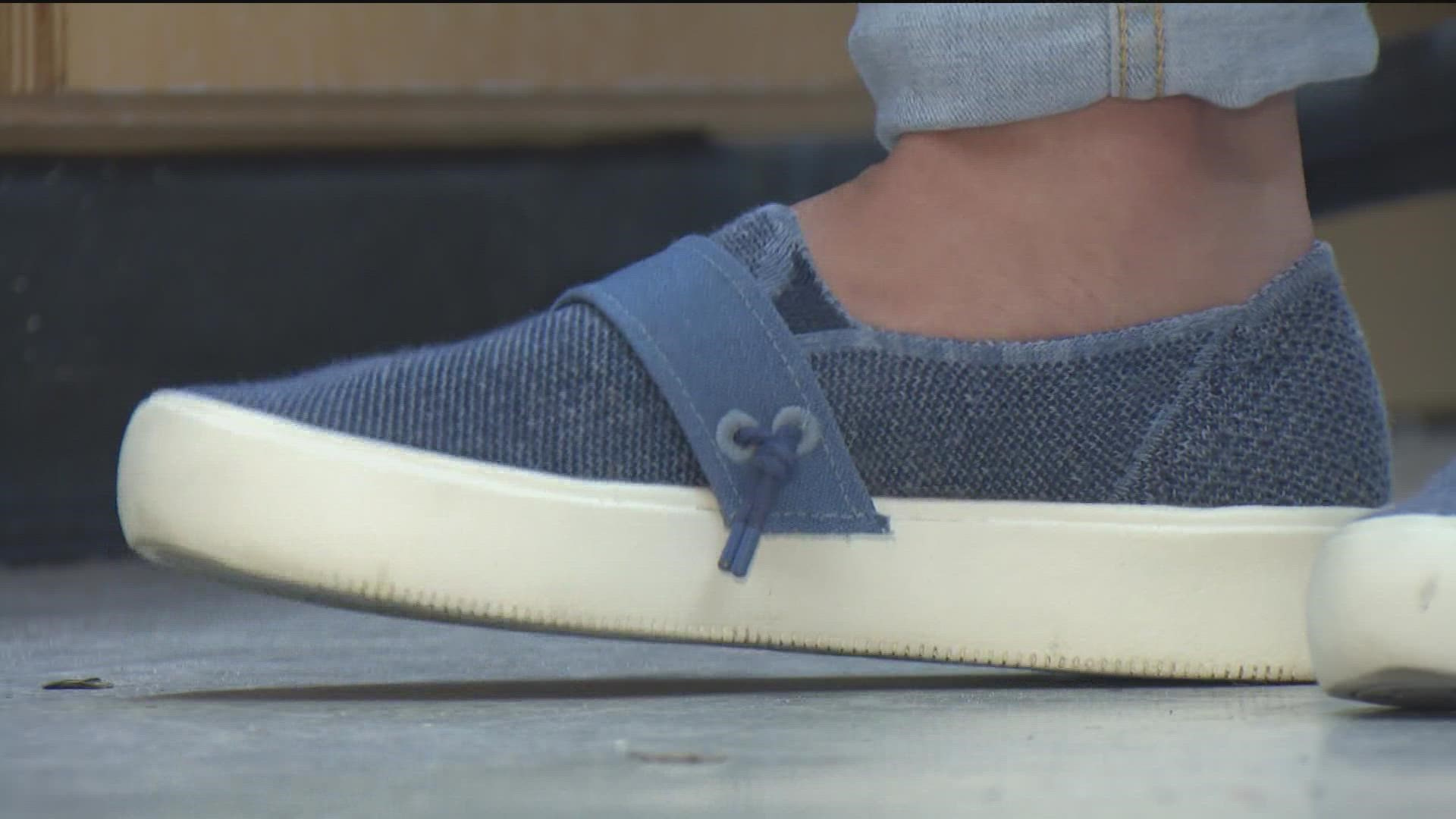SAN DIEGO — You may not think of algae as being something you can wear, but a team from UC San Diego is working to change that.
There are tiny, microscopic plants in the ocean that help us stay alive by clearing carbon dioxide from the air. Those plants are algae and they provide oxygen and food for millions of marine animals, and now algae is being used to create biodegradable sustainable shoes.
“This is in every ocean, every river, every lake. They’re survivors, they’re the first organisms on the planet, they’re the reason you and I can breathe,” says Distinguished Professor of Biology Stephen Mayfield. Now algae has turned into a source of inspiration for his students to replace plastic products.
“Every ocean is covered in plastic trash, how did we do that? Why did we do that?” Professor Mayfield asks.
Wanting to solve major environmental problems, Professor Mayfield tasked his students to use algae to help clear the world of plastic pollution, “we have significant problems caused by us that there are scientific solutions to.”
Their solution came in the form of footwear.
Specifically, footwear made by what is found in nature to then go back into nature.
Gordy Scofield, a polymer chemist at Algenesis showed us how the algae can become the material for shoes, “we mix it with a mechanical stirrer and this evenly disperses everything so that it’s ready for reaction.”
Once its mixed, its ready to be molded. “So as this reaction is going, it’ll spread and expand and fill out the mold completely,” Scofield says.
They are turning algae into the substance to create soles of shoes and the soft padding on top of them where your foot would go.
The material that would go over your foot is hemp. All biodegradable.
The biodegradability was proven in a couple different ways. First, the students put the shoes in their compost.
Mayfield showed us, “here was what our shoe looks like. This is 3 months, 6 months, and by 9 months you don’t see it anymore.”
Secondly, the students put the shoes in the ocean, studying them off the Scripps Pier in La Jolla.
Scuba divers would check on them regularly, they found they became home to mussels, even capturing an image of a lobster on the shoe turned coral reef. And after a few months the hemp disappeared. The bottom of the shoe looks to take about 2 years to completely be gone but during that time it gets eaten by marine bacteria and marine fungi.
Unlike plastic, it serves as a life source as opposed to a source of destruction.
They’ve already sold about 1000 pairs of these shoes, deciding to create the company Blueview Footwear out of UC San Diego because it was taking other large shoe manufacturers much longer to buy into the process.
“The planet doesn’t have five years to wait. I’m not going to sit around and wait. We’re going to do this now and we hope that what our shoe does is puts the fear of God into the big shoe companies, that if you don’t go this way that you could go out of business,” Professor Mayfield explained.
They’re not saying you should throw your shoes into the ocean when you’re done with them, but instead, they see plastic shoes and flip flops as pollution all the time at the coast. At least they can rest easy knowing these shoes won’t harm any animal if lost at sea.
If interested in the shoes, you can find that Blueview Footwear and they are priced at $135.
WATCH RELATED: UC San Diego scientists create algae flip flops (Sept. 2019)

